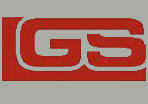|
Commercial airlines are required to remove and overhaul
aircraft landing gear about every 10 years or 18,000
cycles, depending on the airplane model usage and
applicable regulations.
The Overhaul Process
Step 1. The landing
gear has digital pictures taken from all aspects to
provide a permanent record of what is actually
received.
Step 2. The landing
gear is disassembled into individual components and the
part numbers and serial numbers are recorded. The
actual part numbers and serial numbers are compared to
the Trace paperwork furnished by the customer.
Step 3.
Parts are cleaned and bushings removed from those parts
that have bushings. (Most landing gear parts that
have bolt holes have bushings installed to prevent wear.) All bushings are removed and
discarded.
Step 3. Paint is
removed utilizing a blast cabinet and the media used is
plastic chips. The plastic chips remove paint but do
not remove the cadmium or the parent material. The
cadmium will be removed later by chemical strip where
the hazardous content can be controlled.
Step 4. Parts are
stress relieve baked 4 hours. Baking at 375˚
+/- 25˚
reduces residual stress from thousands of landings.
Subsequent plating operations have high hydrogen content
in the baths and hydrogen tends to travel within the
part to any areas of stress. If hydrogen concentrates
at a stress point the part can crack from hydrogen
embrittlement.
Step 5. Parts are
polished utilizing air tools to remove minimal
corrosion.
Step 6. Parts are
inspected and a detailed ICR (incoming condition report)
is made and compared to the design allowances. LGS has
a computer system where all parts have a detailed
routing defining all operations that may be required to
repair the part. The engineering department after
review of the ICR selects those operations necessary to
repair the part and prints a routing for that specific
part and serial number.
Step 7. Parts are
non-destructive tested for cracks by magnetic particle
inspection or by penetrant inspection. Magnetic
particle inspection for steel components puts the part
in a machine where the part is magnetized, a light oil
fluid that has fluorescent particles and iron dust in it
is flowed over the part. A black light is utilized to
show the fluorescent particles. If there is a crack the
iron content of the fluid sets up in a line where the
flux field of the current is broken and clearly shows a
crack (the crack causes the brake in the flux field). In
the case of non-magnetic parts such a aluminum the fluid
used has no iron dust but does penetrate the crack if
any. Part is cleaned of all surface fluid and again
with a black light to highlight a crack is shown because
the cleaning will not remove the fluid from a crack.
Step 8.
Parts are sent on based on their specific routing to the
machine shop or plating as required.
Step 9. Parts are
shotpeened. Shot peen is a process all high strength
parts are subjected to in new production where small
iron beads fired at the parts at a high intensity. The
peening pebbles the surface making a surface stress. If
the part starts to crack the crack tends to follow the
stress and cracks tend to be surface cracks rather than
cracking into the part.
Step 10. Parts are
stripped of the old cadmium, re cadmium plated and baked
23 hours at 375˚ +/- 25˚. Cadmium plating is an
electroplate process bonding cadmium to the high
strength steel of the part. Cadmium (much like
aluminum) corrodes and the corroded cadmium provides a
barrier to oxygen that is necessary for the steel to
corrode. The cadmium bath is high in hydrogen content
so the long bake is utilized to drive the hydrogen out
of the part. This keeps the part from becoming
susceptible to hydrogen embrittlement cracking upon use.
Step 11. Parts are
magnetic particle inspected again. See step 7.
Step 12. New bushings
are installed. The new bushings are made to the exact
size for the part after all of it’s rework.
Step 13. Part is prime
painted and top coat painted.
Step 14. Sealant is
put at the edges of all bushings to preclude moisture
from getting under the bushing. Sealing out the
moisture stops the dissimilar material electric charge
from setting up and causing corrosion.
Step 15. Parts are
identified. And sent to stock for use or assembly.
|

